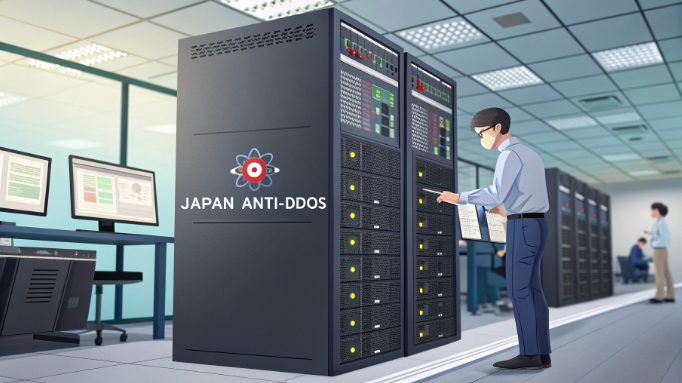Common DDoS Mitigation Methods for Japan Anti-DDoS Servers

In the evolving landscape of cybersecurity, DDoS mitigation and traffic scrubbing for Japan servers have become critical components of modern hosting infrastructure. This comprehensive analysis explores advanced protection mechanisms and mitigation strategies specifically designed for high-security Japanese hosting environments.
Understanding DDoS Attacks and Their Impact
DDoS (Distributed Denial of Service) attacks represent one of the most significant threats to server infrastructure in Japan’s hosting industry. These attacks have evolved from simple flooding techniques to sophisticated multi-vector assaults.
- Layer 3/4 Attacks: Network/Transport layer floods
- Layer 7 Attacks: Application layer exploits
- Mixed-vector Attacks: Combined assault methods
Primary Attack Vectors Targeting Japanese Servers
Understanding attack patterns is crucial for implementing effective mitigation strategies. Japanese servers commonly face several sophisticated attack vectors:
- CC (Challenge Colossus) Attacks
- HTTP flood variants
- Session exhaustion attempts
- Resource consumption strategies
- SYN Flood Attacks
- TCP handshake exploitation
- Connection table overflow
- UDP Flood Variants
- Amplification techniques
- Bandwidth saturation methods
Traffic Scrubbing Methodologies
Modern traffic scrubbing for Japanese servers implements multi-layered filtering mechanisms designed to maintain service availability while eliminating malicious traffic.
Automated Traffic Analysis
- Real-time packet inspection
- Deep packet inspection (DPI)
- Behavior analysis algorithms
- Traffic pattern recognition
- Machine learning-based detection
- Anomaly detection systems
- Predictive attack pattern analysis
Hardware-based Protection Solutions
Enterprise-grade hardware solutions form the backbone of robust DDoS protection infrastructure in Japanese data centers.
- Dedicated Scrubbing Hardware
- High-capacity processing units
- FPGA-based filtering systems
- Custom ASIC solutions
- Advanced Firewall Systems
- Stateful packet inspection
- Rate limiting capabilities
- Protocol validation
Software-based Mitigation Techniques
Software solutions provide flexible and adaptable protection layers that complement hardware-based defenses.
- Web Application Firewalls (WAF)
- Request filtering
- SSL/TLS termination
- Custom rule implementation
- Dynamic Rate Limiting
- Adaptive thresholds
- IP reputation systems
- Geographic-based filtering
Implementation Strategies for Different Scales
Protection requirements vary based on infrastructure scale and business requirements. Here’s a strategic approach for different deployment scenarios:
- Small-scale Deployments
- Basic WAF implementation
- Cloud-based DDoS protection
- Traffic monitoring tools
- Medium-scale Infrastructure
- Hybrid protection solutions
- Dedicated scrubbing centers
- Redundant connectivity
- Enterprise-level Protection
- Multi-layer defense systems
- Distributed scrubbing networks
- 24/7 SOC monitoring
Preventive Measures and Best Practices
Implementing proactive security measures is crucial for maintaining robust protection against DDoS attacks.
- Regular Security Audits
- Infrastructure vulnerability assessment
- Protection system effectiveness testing
- Configuration optimization
- Backup and Disaster Recovery
- Geographic redundancy
- Load balancing setup
- Emergency response protocols
Frequently Asked Questions
Essential information for technical professionals managing Japanese server infrastructure:
- Attack Detection
- Traffic pattern analysis
- Resource utilization monitoring
- Alert system configuration
- Cost Considerations
- Protection tier selection
- Bandwidth overhead calculations
- ROI assessment methods
Future Trends in Server Protection
The evolution of DDoS protection continues to advance with emerging technologies:
- AI-driven Protection Systems
- Automated response mechanisms
- Predictive attack detection
- Self-learning defense systems
- Quantum Computing Implications
- Post-quantum cryptography
- Advanced encryption methods
- Next-generation authentication
Conclusion
Effective DDoS mitigation for Japanese servers requires a comprehensive approach combining hardware solutions, software protection, and strategic implementation. As attack methods evolve, staying current with traffic scrubbing technologies and protection strategies remains crucial for maintaining robust server security.
Understanding and implementing these mitigation methods is essential for any organization hosting critical infrastructure in Japanese data centers. By combining multiple layers of protection with proactive monitoring and rapid response capabilities, organizations can maintain high availability while effectively defending against sophisticated DDoS attacks.

